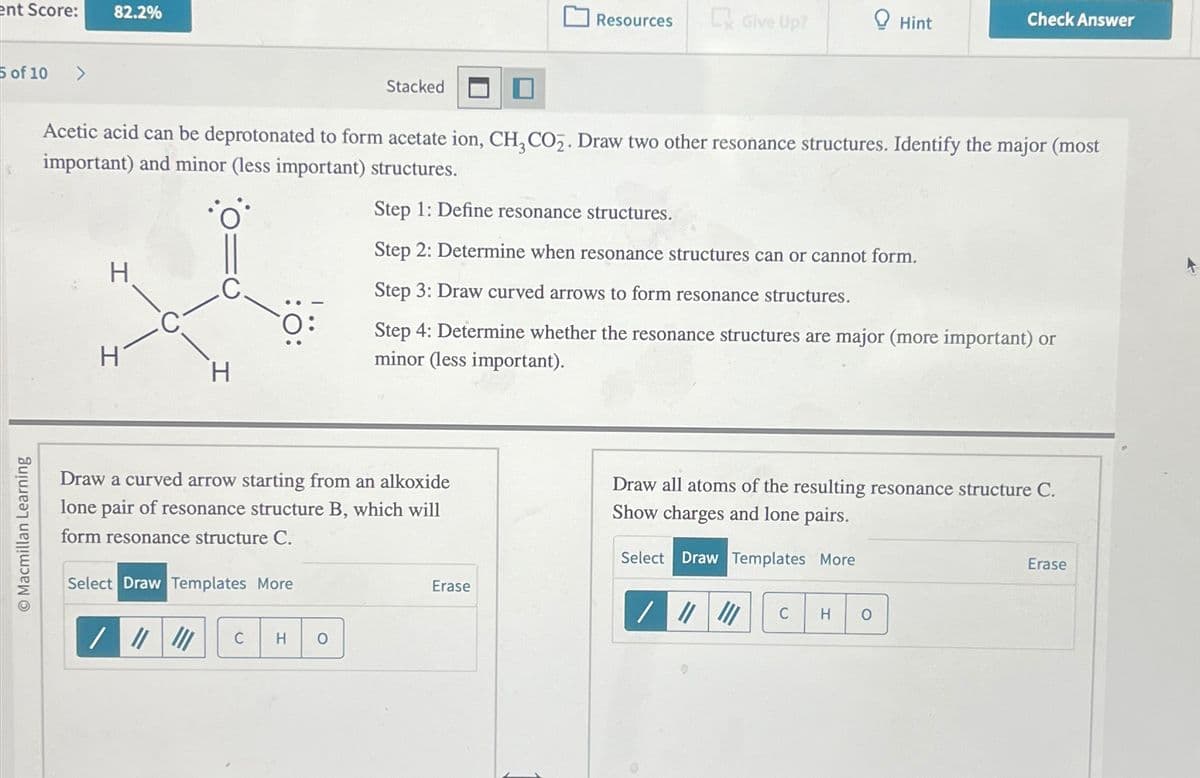ent Score: 5 of 10 Macmillan Learning > 82.2% H H Draw a curved arrow starting from an alkoxide lone pair of resonance structure B, which will form resonance structure C. Select Draw Templates More Stacked Acetic acid can be deprotonated to form acetate ion, CH, CO₂. Draw two other resonance structures. Identify the major (most important) and minor (less important) structures. Step 1: Define resonance structures. Step 2: Determine when resonance structures can or cannot form. Step 3: Draw curved arrows to form resonance structures. Step 4: Determine whether the resonance structures are major (more important) or minor (less important). / |||||| C H O Resources Erase Give Up? Hint C Check Answer Draw all atoms of the resulting resonance structure C. Show charges and lone pairs. Select Draw Templates More H O Erase
Electronic Effects
The effect of electrons that are located in the chemical bonds within the atoms of the molecule is termed an electronic effect. The electronic effect is also explained as the effect through which the reactivity of the compound in one portion is controlled by the electron repulsion or attraction producing in another portion of the molecule.
Drawing Resonance Forms
In organic chemistry, resonance may be a mental exercise that illustrates the delocalization of electrons inside molecules within the valence bond theory of octet bonding. It entails creating several Lewis structures that, when combined, reflect the molecule's entire electronic structure. One Lewis diagram cannot explain the bonding (lone pair, double bond, octet) elaborately. A hybrid describes a combination of possible resonance structures that represents the entire delocalization of electrons within the molecule.
Using Molecular Structure To Predict Equilibrium
Equilibrium does not always imply an equal presence of reactants and products. This signifies that the reaction reaches a point when reactant and product quantities remain constant as the rate of forward and backward reaction is the same. Molecular structures of various compounds can help in predicting equilibrium.

Step by step
Solved in 4 steps with 3 images




